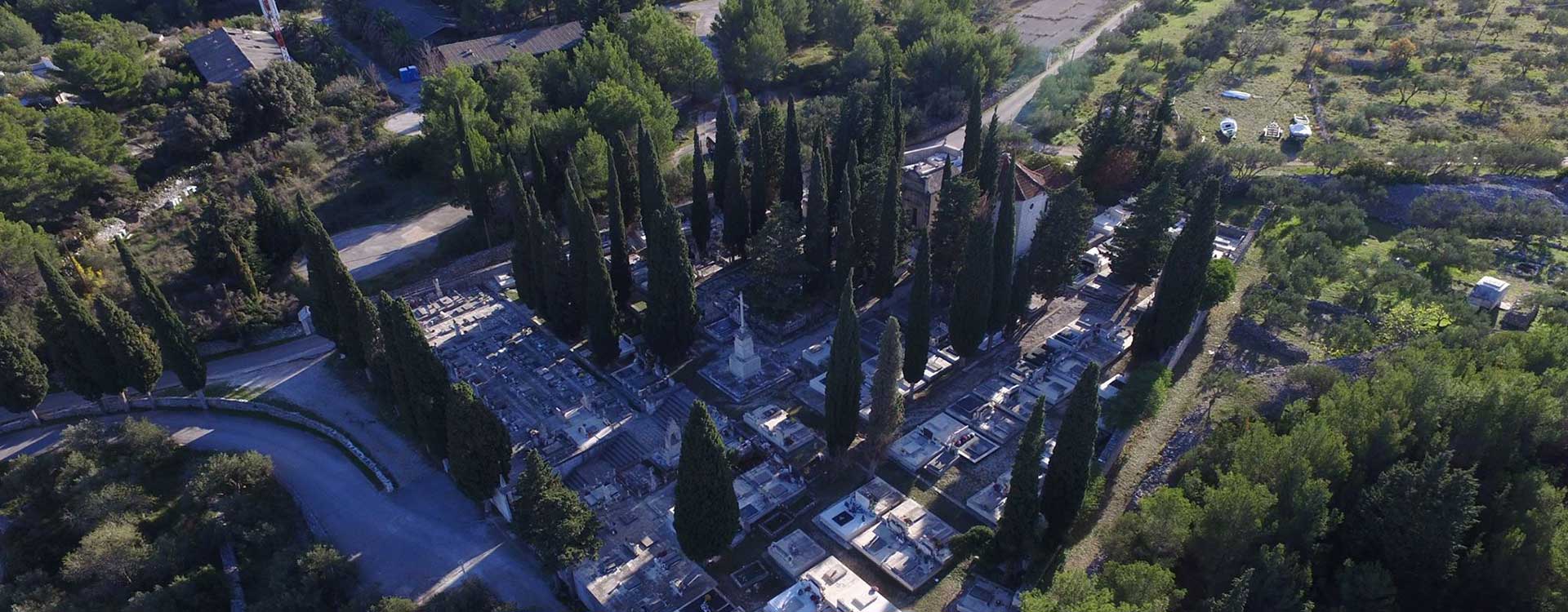In the early 19th century, under Napoleon’s rule, burial on church grounds and in settlements was prohibited all across Dlamatia. And so in 1880 Milna cemetery was relocated and an octagonal mausoleum-style church dedicated to the Lady of Seven Sorrows was built. Burial of the dead in the newly built cemetery began in 1895. Initially it was enclosed by a plain stone wall, and later a high wall was built in 1898. The cemetery is positioned on an elevation, on the opposite side of the bay, in a way that faces the town and the entrance to the cemetery “is looking at” the entrance to the parish church. Such a position on the high ground, “cross facing a cross”, creates the effect of the holiness and (spiritual) elevation of the last resting place. The position of the cemetery, with its main northern façade overlooking the town and the parish church, is an example of neoclassicist concept of connecting spaces visually and infrastructurally.

www.tz-milna.hr



























